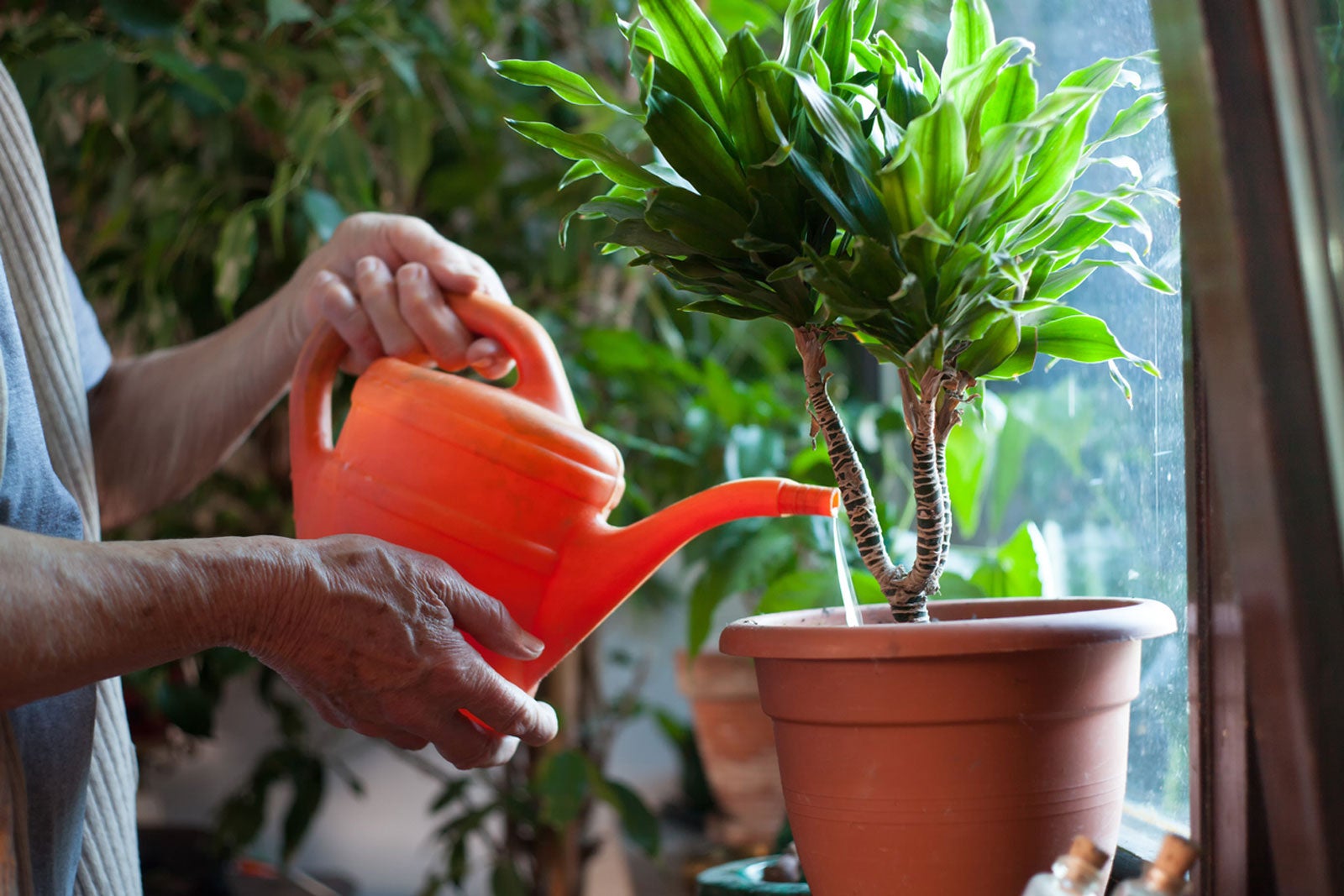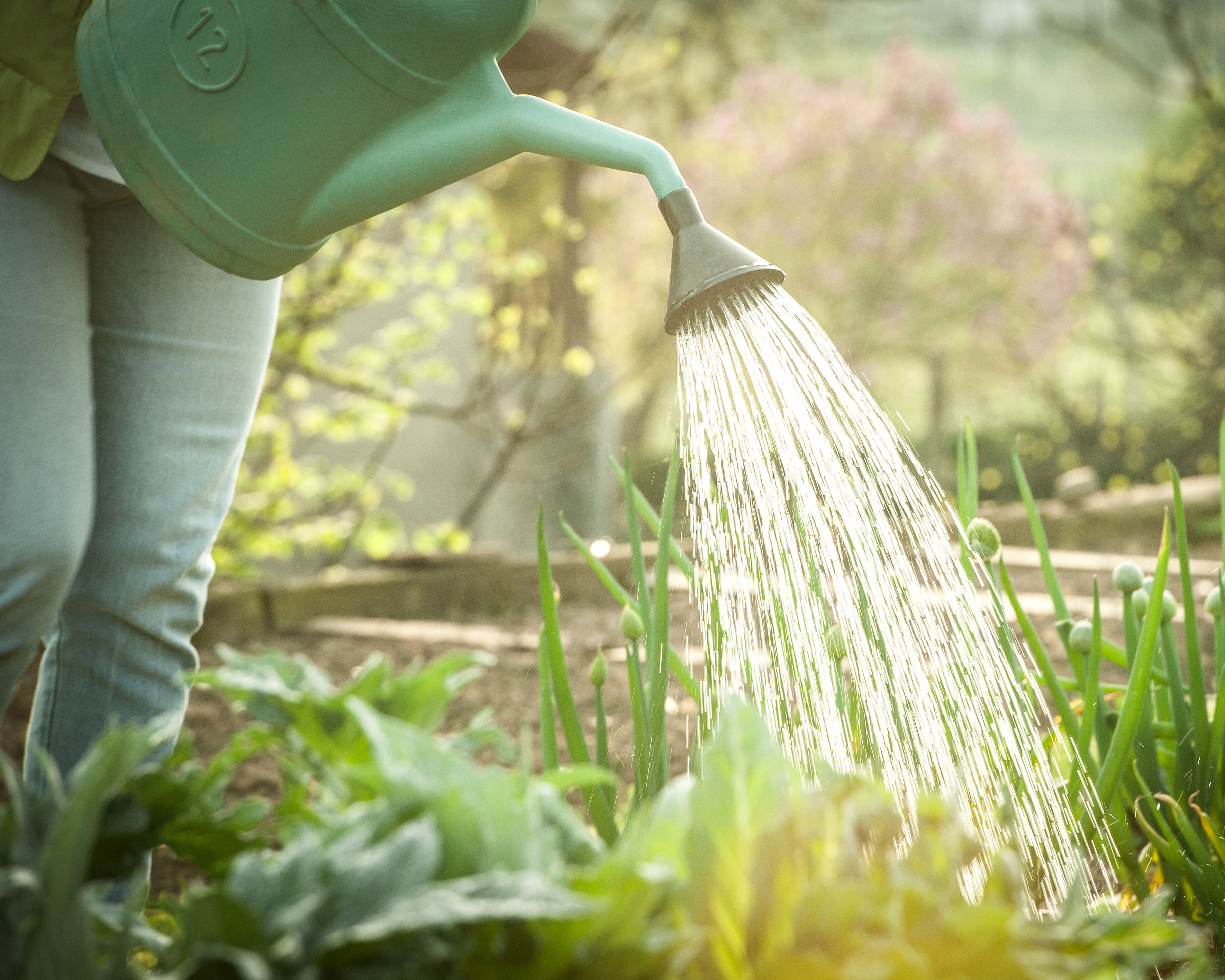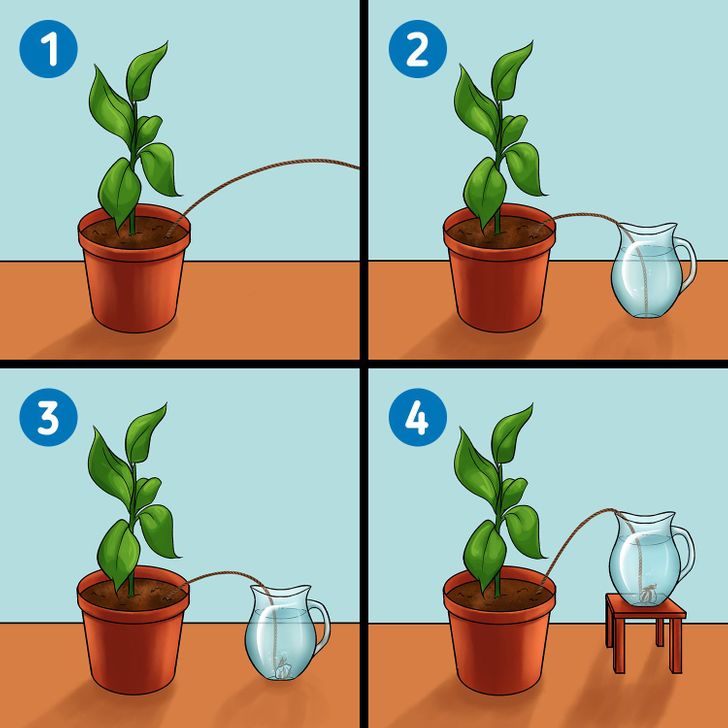How To Water Plants Up High
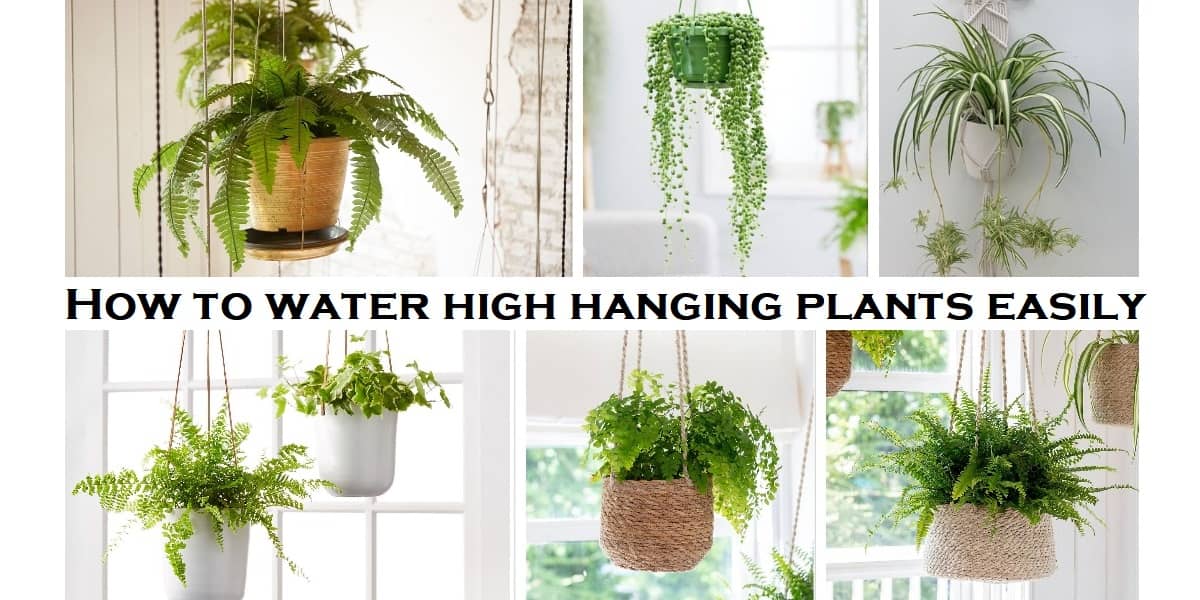
Imagine sunlight dappling through leaves, catching the vibrant hues of hanging baskets overflowing with petunias and geraniums. A gentle breeze rustles the foliage, creating a soothing melody. But the beauty feels incomplete, a silent plea for a vital element: water. How to reach those thirsty blossoms, suspended just beyond your grasp, becomes the question that hangs in the air, as pressing as the summer heat.
Watering plants that are positioned high up, whether in hanging baskets, on balconies, or atop shelves, presents a unique challenge. Mastering this task requires more than just a good aim; it demands understanding plant needs, selecting the right tools, and employing effective techniques. This article will explore various methods for watering elevated plants, ensuring they thrive and continue to brighten our spaces.
The Significance of Proper Watering
Before diving into the "how," let's consider the "why." Proper watering is fundamental to plant health. Overwatering and underwatering are common pitfalls that can lead to root rot, nutrient deficiencies, and ultimately, plant death.
The specific watering needs of a plant depend on factors such as species, pot size, sunlight exposure, and temperature. Succulents, for example, require less frequent watering than moisture-loving ferns. Understanding these factors is essential before choosing your watering method.
The Arsenal: Tools of the Trade
Several tools can simplify the process of watering high-up plants. The best choice often depends on the height and accessibility of the plants, as well as your personal preference.
Watering Cans with Long Spouts
A watering can with a long, slender spout is a classic choice. The extended spout allows you to reach plants without having to lift the can too high, reducing strain and minimizing spills.
Look for a can with a detachable rose (the showerhead attachment). This allows you to switch between a gentle shower for delicate foliage and a more direct stream for reaching the soil.
Watering Wands
Watering wands, also known as extension wands, are essentially extensions for your hose. They feature a long, often adjustable, wand with a spray nozzle at the end.
These are particularly useful for watering hanging baskets or plants on high shelves. Many wands offer adjustable spray patterns, from a gentle mist to a focused stream.
Pump Sprayers
Pump sprayers are handheld or backpack devices that pressurize water, allowing you to spray plants with ease. These are ideal for misting foliage or applying diluted fertilizers.
Choose a sprayer with an adjustable nozzle to control the spray pattern. Be mindful of the weight, especially if you have multiple plants to water.
Self-Watering Systems
For those seeking a more hands-off approach, self-watering systems can be a game-changer. These systems come in various forms, from self-watering pots to automated drip irrigation setups.
Self-watering pots typically have a reservoir at the bottom that provides water to the plant's roots through capillary action. Drip irrigation systems deliver water directly to the soil at a slow, consistent rate.
Techniques for Effective Watering
Having the right tools is only half the battle. Employing effective watering techniques is equally crucial.
The Finger Test
Before watering, always check the soil moisture. Insert your finger about an inch into the soil. If it feels dry to the touch, it's time to water. If it feels moist, wait a day or two and check again.
Avoid relying solely on visual cues, as the surface of the soil can be dry even when the soil beneath is still moist.
Watering Deeply and Infrequently
When you water, water deeply, ensuring that the entire root ball is saturated. Water until excess water drains out of the drainage holes at the bottom of the pot.
This encourages roots to grow deeper, making the plant more resilient to drought. Avoid frequent, shallow watering, which can lead to weak root systems.
Watering Early in the Day
Water your plants early in the morning, if possible. This allows the foliage to dry before nightfall, reducing the risk of fungal diseases.
Avoid watering during the hottest part of the day, as water can evaporate quickly, and wet foliage can be scorched by the sun.
Addressing Hard-to-Reach Areas
For plants that are particularly difficult to reach, consider using a combination of tools and techniques. For instance, you might use a watering wand to reach the plant and a pump sprayer to mist the foliage.
Consider enlisting help from a friend or family member to hold the plant while you water it, or vice versa. Teamwork can make the task easier and safer.
Collecting and Using Rainwater
Rainwater is naturally soft and free of chemicals, making it an excellent choice for watering plants. Collect rainwater in a rain barrel or other container and use it to water your elevated plants.
This is not only beneficial for your plants but also an environmentally friendly practice.
Safety Considerations
Watering high-up plants can pose safety risks if not done carefully. Always use a stable ladder or step stool when reaching for elevated plants. Avoid overreaching, which can cause you to lose your balance.
Be mindful of your surroundings and ensure that the area is clear of obstacles. Wear appropriate footwear to prevent slipping.
A Touch of Innovation
Beyond the traditional methods, technological advancements have introduced smart watering solutions. These include sensors that monitor soil moisture and automatically trigger watering systems.
Arable Labs, for example, offers sensor technology that provides detailed insights into plant health and environmental conditions. While these solutions may come with a higher initial cost, they can save time and effort in the long run.
The Joy of a Thriving Garden
Watering high-up plants may seem like a minor task, but it's an essential part of creating a thriving garden. The effort you put into providing your plants with the water they need will be rewarded with lush foliage, vibrant blooms, and the satisfaction of nurturing life.
The act of caring for plants, even those that are difficult to reach, can be incredibly therapeutic. It provides a connection to nature and a sense of accomplishment.
Conclusion
Mastering the art of watering high-up plants is a journey that combines knowledge, skill, and a genuine love for the natural world. By understanding plant needs, choosing the right tools, and employing effective techniques, we can overcome the challenges of reaching elevated plants and create thriving green spaces that bring joy to our lives.
As you gaze upon your flourishing hanging baskets and vibrant balcony gardens, remember that each drop of water is an act of care, a testament to the beauty and resilience of life. Let the act of watering be a mindful practice, a moment to connect with nature and appreciate the simple joys of nurturing growth.
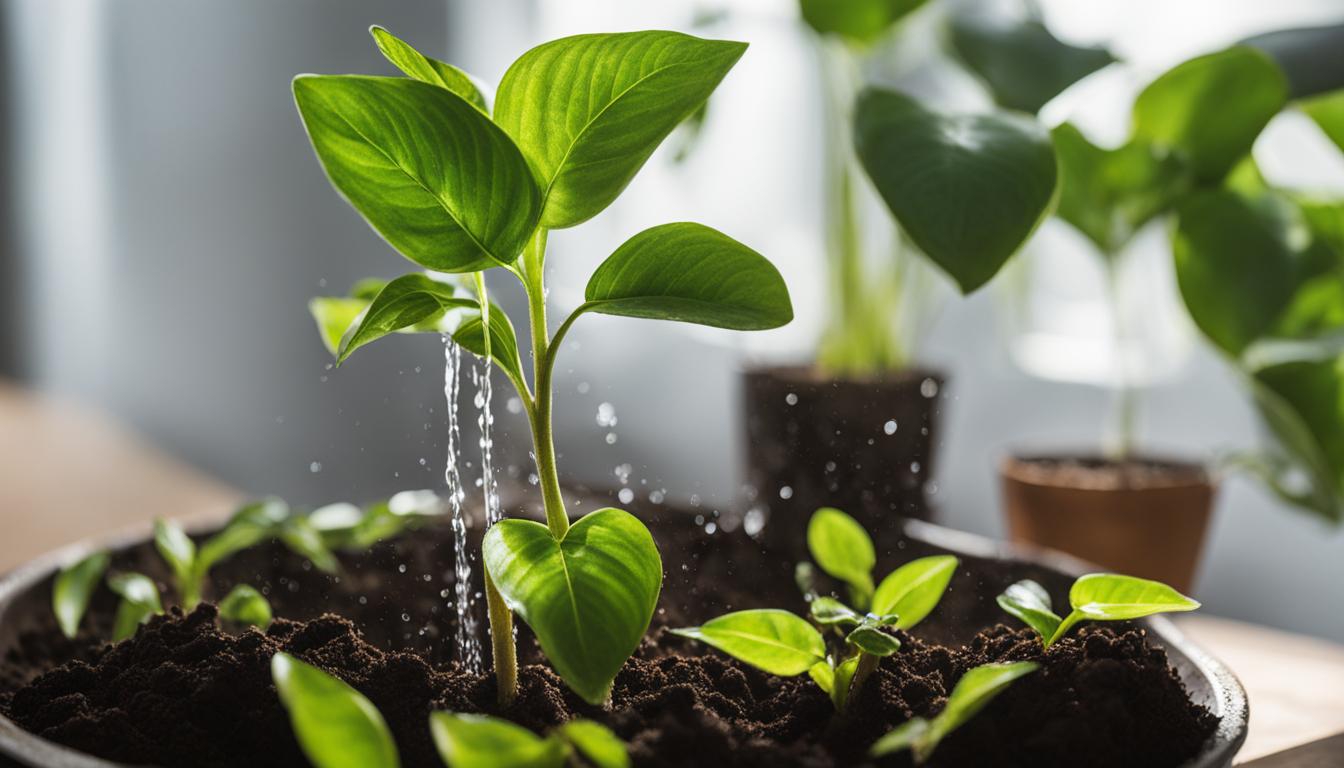










:max_bytes(150000):strip_icc()/GettyImages-171280971-5a8c3c1a19bb4814906442ac447254c8.jpg)
